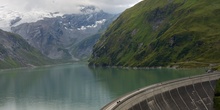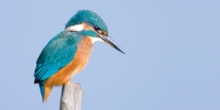Biodiversity
Our Work
Latest in Biodiversity
-

Towards sustainability: Future policies for European livestock
The CAP is failing to reward adequately those livestock farmers who produce public goods. Brexit and CAP reform are opportunities to do better.
-
Fitness Check of the Birds and Habitats Directives
The Nature Directives (i.e. Birds Directive and Habitats Directive) are the key instruments of EU environmental policy; the Fitness Check support study, carried out by Milieu, IEEP and ICF for the European Commission DG-ENV, examined their effectiveness, efficiency, relevance, EU-added value and their coherence with the wider acquis.
-
Are Ecological Focus Areas delivering for biodiversity?
Ecological Focus Areas are intended to safeguard and improve biodiversity on arable farms in the EU. What evidence is there that they are actually delivering biodiversity on farmland?
-
Ecological Focus Areas – what are their impacts on biodiversity?
Ecological Focus Areas are intended to safeguard and improve biodiversity on arable farms in the EU. This IEEP study for EEB and BirdLife examined the evidence for potential biodiversity impacts on farmland, taking into account how the areas are being managed.
-
Biodiversity offsets: What did the UK pilot scheme achieve?
Voluntary biodiversity offsetting was piloted in six English areas by local planning authorities and stakeholder organisations who agreed to take part in the government programme. IEEP and Collingwood Environmental Planning, together with David Tyldesley, assessed the UK government programme from 2012 to 2014.
-
A New Vision for Responsible Renewable Energy with a Clear European Dimension
Renewable energy is key to the decarbonisation of Europe’s energy supply, however, the scale of expansion needed will have significant impacts over a considerable area. This new report suggests how a resource efficient energy system might be delivered in a way that minimises and mitigates impacts on biodiversity and the wider environment.
-
Protected area approaches in the EU
Protected areas play an important role in achieving biodiversity conservation targets. IEEP has compared the approaches and rationale of designating and managing protected areas in the UK and a selection of eight other EU Member States.
-
Biodiversity offsets: design of biodiversity metrics and mechanisms for securing long term conservation benefits
This study by ICF International, IEEP and national experts reviewed international best practice for designing biodiversity offsetting metrics and establishing mechanisms for ensuring long term conservation benefits from offsetting. It explores options for implementation at the European level and possible challenges. The report follows up on the IEEP report on policy options to achieve no net loss of biodiversity.
-
Looking beyond Paris
The latest edition of IEEP's newsletter is now available. David Baldock argues that in the next six months the EU has a substantive role in contributing to agreement on an ambitious but credible set of SDGs and more stretching climate targets. Also: energy efficiency and security; bioeconomy; and circular economy.
-
Evidence before ideology
The latest edition of IEEP's newsletter is now available. David Baldock argues that in 2015 solid evidence rather than political fashion will be required in scrutinising EU policy and economic performance. Also: fossil fuel subsidies; allocating fishing quota; and the launch of our new training programme.
-
The Manual: Chapter 13 - Sectoral policies
This is a chapter of IEEP’s Manual of European Environmental Policy. This chapter sets out the development of some of the most important links between EU environmental policy and other policy areas, such as agriculture, forestry, fisheries, transport, trade, and so on.
-
High Nature Value farming throughout EU-27 and its financial support under the CAP
This study reviews Member States’ estimates of the extent of HNV farmland and use of RDP measures and the CMEF indicators, then identifies future priorities for CAP support for HNV farming and discusses the support opportunities under the reformed CAP. It offers detailed new evidence about the combined effect of Pillar 1 and Pillar 2 CAP payments on the economic and environmental viability of a typical HNV farming system in three Member States.
-
New report: High Nature Value Farming in the EU
Member States need to make the most of the opportunities under the new Common Agricultural Policy if the declines in HNV farming, critical for meeting our 2020 biodiversity targets, are to be halted.
-
Options for sustainable food and agriculture in the EU
How should Europe respond to the increased demands on our food and agriculture systems arising from global population growth, changing diets, and competing demands on agricultural land? This report offers a view on how the EU could play a role in meeting these challenges in the coming decades and sets out some of the options which merit particular attention.
-
Europe’s role in feeding the world in 2050
IEEP presents views on how Europe should respond to the increased demands on our food and agriculture systems arising from global population growth, changing diets, and competing demands on agricultural land.
-
Interactions between climate change and agriculture; and between biodiversity and agriculture in Europe
What should be Europe’s role in feeding the world in 2050? This IEEP report for the European Parliament describes options for increasing the productivity of European agriculture whilst adapting to climate change, reducing emissions, and providing biodiversity and ecosystem service benefits from agriculture.
-
Land use mapping for sustainable biofuels
IEEP and WWF join forces to define criteria and principles to guide the mapping of appropriate land use to ensure sustainable biofuel crops.
-
Addressing ILUC? The European Commission’s proposal on indirect land use change
The European Commission’s proposal on indirect land use change – what’s in it for mitigating emissions? Read IEEP’s latest Biofuel ExChange briefing.
-
Farmland Abandonment in the EU: an Assessment of Trends and Prospects
Assessment of recent agricultural abandonment in the EU and its causes, and likely future abandonment according to expected trends in drivers
-
Valuing and Conserving Ecosystem Services: a Scoping Case Study in the Danube Basin
The report for WWF provides an assessment of the value and status of some key ecosystem services in the Danube Basin, and some policy instruments to support them.
Highlights
-

Ecological Focus Areas – what are their impacts on biodiversity?
Ecological Focus Areas are intended to safeguard and improve biodiversity on arable farms in the EU. This IEEP study for EEB and BirdLife examined the evidence for potential biodiversity impacts on farmland, taking into account how the areas are being managed.
-

A New Vision for Responsible Renewable Energy with a Clear European Dimension
Renewable energy is key to the decarbonisation of Europe’s energy supply, however, the scale of expansion needed will have significant impacts over a considerable area. This new report suggests how a resource efficient energy system might be delivered in a way that minimises and mitigates impacts on biodiversity and the wider environment.
-

Protected area approaches in the EU
-

Biodiversity offsets: design of biodiversity metrics and mechanisms for securing long term conservation benefits
-

Valuing and Conserving Ecosystem Services: a Scoping Case Study in the Danube Basin
